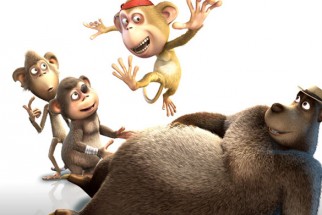

Since many families will watch the movie at home on DVD or on cable television, it’s inexcusable to do the job halfway. My local theater only carried the movie in 2D, which emphasized every blurred face and fuzzy tree. Most of the backgrounds of the scenes are blurry and indistinct, presumably because the film released in India in 3D and the animators thought they could get away with it. The character movements are so jerky you can practically see the physics engine that animated them. The animation quality is slightly above direct-to-video caliber. The most obvious criticism of the film is that it doesn’t look good. This review covers the original Hindi-language version.īollywood isn’t known for making films specifically designed to appeal to children, and nowhere is that more apparent than in Delhi Safari, a wretched waste of time that insults moviegoers of all ages. The government’s handling of the metro shed project in Aarey Milk Colony is a good example of all these culprits coming together.* Note: An English-language version of Delhi Safari will be released on December 7, 2012. Nanditha Krishna in Sacred Animals of India (2008) lists unchecked development, destruction of habitat, and bureaucratic red tape as the culprits in the killing of wildlife and the environment, simultaneously. Prerna Singh Bindra in The Vanishing: India’s Wildlife Crisis (2017) observes that legislations related to the environment and animals post the Bhopal Gas tragedy in 1986 have been reactionary. The film initiates a conversation on the importance of animal rights in India and focuses on the need for the protection of biodiversity and the environment.

While only fictional, this story mirrors reality and brings into focus uncomfortable questions that animal activists across India are trying to address. Sultan’s murder silenced the voice of all the forest animals, but was viewed as just collateral damage. As a result, he was shot dead and silenced, like Avni the tigress. Sultan, the alpha male-considered the king of the jungle-tried protecting his home from humans felling trees. The opening scene of the film shows a tearful lion cub, Yuvraj, recollecting the painful sight of his father Sultan being killed in the national park. Delhi national-award-winning 3D-animated feature film set in Sanjay Gandhi National Park in Maharashtra that is known for its biodiversity.


 0 kommentar(er)
0 kommentar(er)
